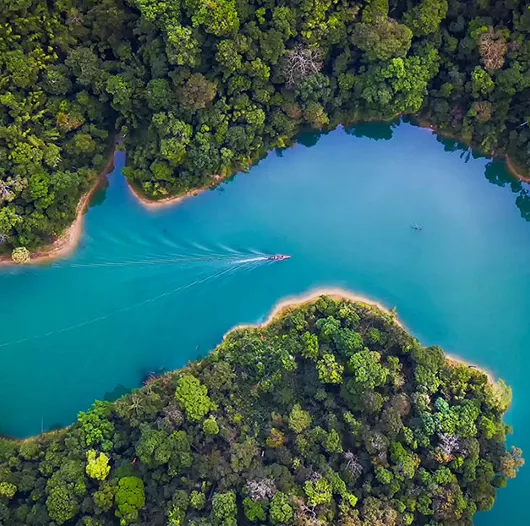How Saving the Rainforest Can Also Save Global Industry


An illegal logger stalks his quarry1. Slowly he moves through the dense rainforest looking specifically for ancient, old growth, hardwood trees. There! He finds what he’s looking for – each tree worth upwards of $30,000 when sold illegally. He calls in the cutting crew, starts the chainsaws, and within hours has decimated the stand: acres of what was once pristine, beautiful trees are now gone. The ecosystem that relied on those trees and the oxygen they produced for all of humanity gone as well. Irreplaceable for hundreds of years.
Stealthy, solitary, and typically hours if not days away from the nearest authorities, this illegal logger is part of a global assault on pristine forest land – and hard to stop. But there is someone watching. Correction – some thing watching – that cannot only stop this logger but catch him before he even starts, saving thousands of acres of forest a year.
For the last half decade, Rainforest Connection has been developing and deploying solar-powered devices called ‘guardians’ in rainforests all over the world. These guardians ‘listen’ to the rainforest and an algorithm works to detect chainsaws among the forest din. When a chainsaw has been identified and verified, forest rangers are dispatched to intercept the loggers. This solution has saved countless acres of forest and is now widely adopted in threatened environmental areas around the world.
But that’s just the tip of the iceberg (or in this case, the very top of the forest canopy!) in terms of what these guardians can do.
Today, while the rangers arrive when they otherwise might not, they still are not there in time to stop the illegal logging before some has occurred already. What Rainforest Connection and its global partners around the world really need is not detection, but prevention. How do we stop deforestation before it even starts?
Rainforest Connection has partnered with Hitachi Vantara to add this important element. Here’s how it works:
Back to the illegal logger. What has he done wrong? Who or what has been listening the entire time he’s been in the forest? It’s not the guardian; it’s the eyes and ears of the rainforest itself: the animals. They know when there is a change in the forest environment, even when it’s not loud enough or distinct enough for Rainforest Connection’s guardians to hear it. The animals of the forest detect the illegal logger way before he has fired up his chainsaw.
Together, the animals of the rainforest produce what’s called a ‘bio-acoustic signature’ – the rhythm of the forest, so to speak. And when an illegal logger enters the forest to scout for trees, the animals know it. The forest turns silent – or filled with alarm calls. The bio-acoustic signature changes.
That’s where Hitachi Vantara’s solution comes in. Advanced algorithms identify, detect, and alert. Technical infrastructure loads, transforms, processes, and stores. The solution we have built means rangers can now be accurately alerted to the potential of deforestation, rather than the deforestation itself. The hours of lead time illegal logging crews have had is now gone; rangers can stop them before they even start.
At Hitachi Vantara, we operate with what we call a ‘double bottom line,’ which means we operate both at a profit for our investors and to give back to society. The work we’re doing to move beyond detection to prediction and save the rainforest is a great example of giving back to society, but believe it or not, it can also have significant, far-reaching implications on our core business.
Think of the hum of a factory floor. Compressors compressing, machinery moving and molding, products being made. Just like a forest, this environment has an ‘industrial-acoustic signature.’ What if that acoustic signature changes? Is it an indication a machine is about to break? Out of lubricant? Is the fire suppression system offline? Did a piston misfire?
Think of a transport hub. Trains, aircraft, highways. Can anomalies in the background noise foretell maintenance needs, safety concerns, irregular operations, or opportunities for improvement? The answer, for Hitachi’s own industrial companies as well as for our industrial customers, is yes.
While component-based acoustic monitoring is not new, calculating an industrial-acoustic signature brings an innovative approach to industrial health and predictive analytics – and applies to all sorts of industries: manufacturing, transport, and energy as well as healthcare, retail, distribution, and many more.
My colleagues and I are proud of the work we’re doing with Rainforest Connection and the impact it’s having on preventing illegal logging. Leveraging that great work for industrial applications reflects our desire to fulfill our mission of improving our double bottom line – saving rainforests and improving the safety and effectiveness of industry at the same time.